Syllables Teaching Resources
Open the door to understanding both closed syllables and open syllables in your classroom this school year with printables, worksheets, activities, games, and digital teaching resources to help students make sense of this unit of pronunciation.
What Is a Syllable?
You may be new to teaching this part of the ELA curriculum, but perhaps you remember sitting in a classroom as a child with your hand beneath your chin as you pronounced words? Each time your chin hit your hand, you counted. Or maybe you clapped along as you slowly pronounced words, slapping your hands together as the chunks of the words containing vowels were broken up?
Both are simple but popular methods of counting syllables, a key component of learning this standard of ELA. But wait, what are syllables?
A syllable, by definition, is a part of a word that has a vowel in it.
For example, let's say you have the word open. This word is made up of two syllables — the vowel "o" stands on its own as one syllable, and "pen" is the second part of the word containing a vowel.
Syllables are often described as the phonological building blocks of words as they help us organize the speech sounds within a word.
Some of the benefits of learning about syllables include the following:
- Students become better readers and writers
- Students develop spelling skills
- Syllables form the basis of haiku writing in fourth or fifth grade
Types of Syllables
Syllables can be made up of just vowels or a vowel and accompanying consonants. To differentiate, syllables are broken down into 6 main types:
- Open syllables: An open syllable ends with a vowel sound that is spelled with a single vowel letter. The vowel sound in an open syllable is a long vowel sound. In the example above, the "o" in open is an open syllable.
- Closed syllables: A closed syllable ends with a consonant, and the vowel in this type of syllable is short, such as the "e" in "pen" in the example above.
- R-controlled syllable: Words like bar and far are examples of r-controlled syllables that contain a vowel before the letter "r." This "r" dictates how the vowel sounds.
- Vowel-consonant-e syllable: You will typically find this type of syllable at the end of a word.
- Vowel team syllable: When there are two vowels next to one another in a word, forming a new sound, you have what's known as a vowel team syllable. For example, the "ou" in "sound" is a vowel team syllable.
- Consonant+l-e or Final Stable Syllable: This is another syllable type that is often found at the end of the word, such as the "-ble" at the end of the word "syllable."
How to Teach Syllables
To make your syllable lesson plans easy, the expert teachers on the Teach Starter team have created syllable sorting activities, open and closed syllable tasks, and more activities to add to your lessons. Explore the collection below!
- Plus Plan
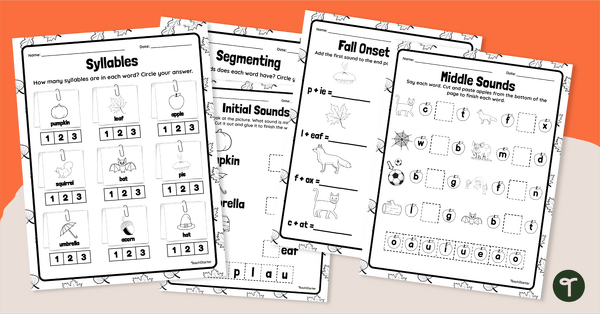
Fall Phonics - Kindergarten Worksheet Pack
Bring a bit of fall into the classroom with a set of fall-themed worksheets covering syllables, blending, segmenting, and more!
- Plus Plan
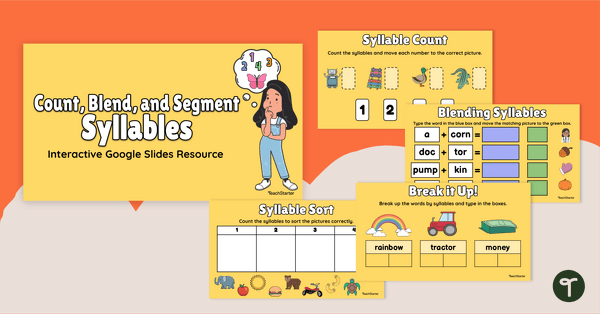
Counting, Blending, and Segmenting Syllables Interactive Activity
Practice blending, segmenting, and counting syllables in words with a Google Interactive activity.
- Plus Plan
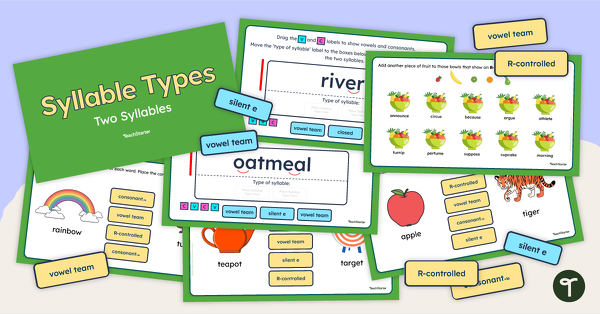
Syllable Types – Two Syllables Interactive Activity
Identify types of syllables in two-syllable words with this Google Slides Interactive activity.
- Plus Plan
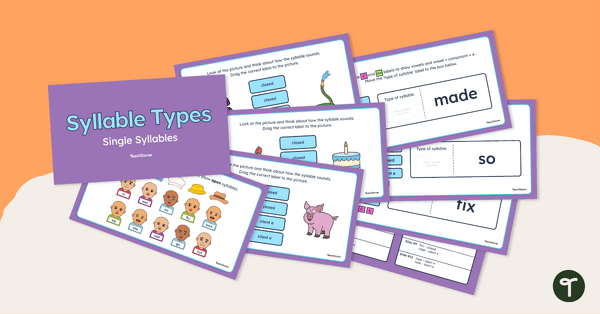
Syllable Types – Single Syllable Interactive Activity
Identify types of syllables in single syllable words with this Google Slides Interactive activity.
- Plus Plan
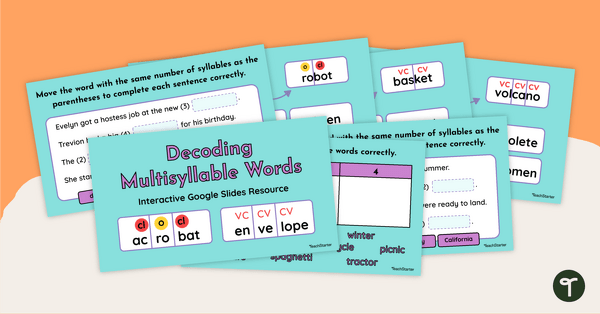
Multisyllable Words Google Interactive
Build multisyllable word decoding skills with upper-grade students with a Google Slides interactive activity.
- Plus Plan
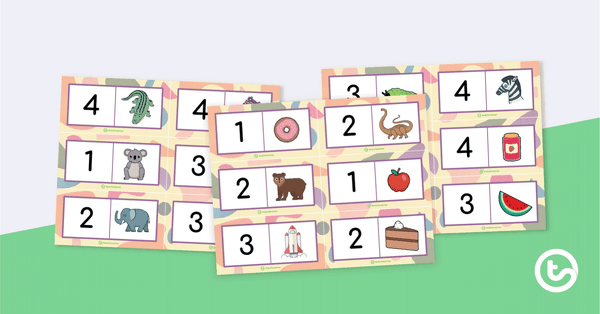
Syllables Dominoes
Segment and count syllables in words with a set of 28 image and number dominoes.
- Plus Plan

Four in a Row Game - Syllables
Segment words into syllables as you count them with this set of 24 picture cards and syllable-count gameboard.
- Plus Plan
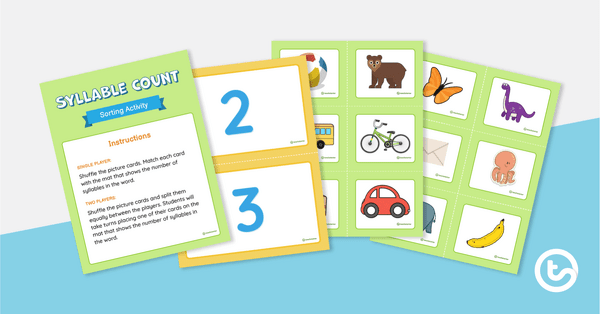
Syllable Count Sorting Activity
Practice segmenting and counting syllables in words with this set of 24 picture sorting cards.
- Plus Plan
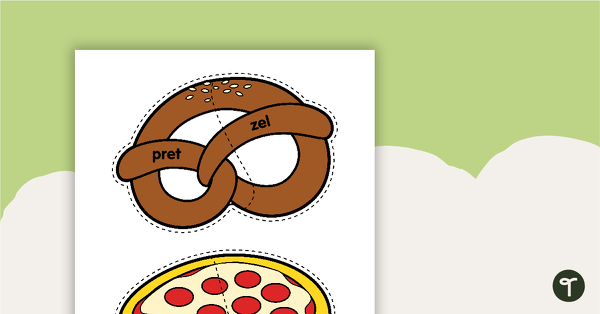
Food-Themed Syllable Puzzle
A fun food-themed phonics activity for lower years that helps to develop syllable recognition.
- Plus Plan
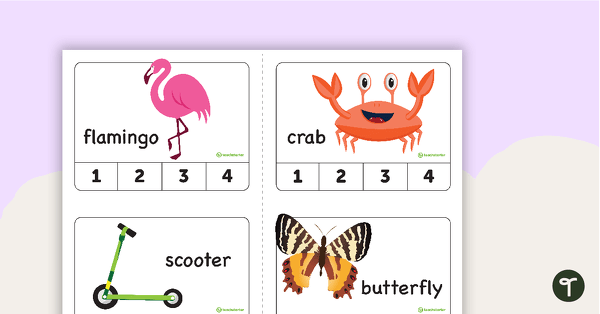
Syllable Clip Cards
A fun, hands-on activity to practice syllable recognition.
- Plus Plan
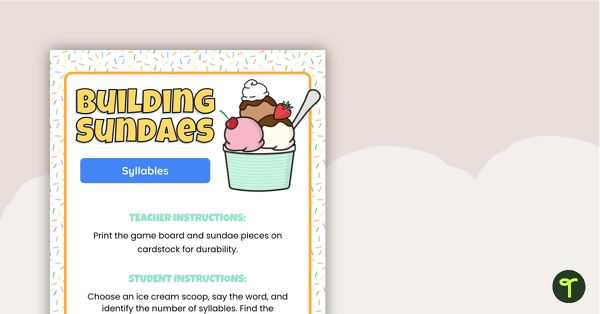
Building Sundaes - Syllables
Practice segmenting and counting syllables while building sundaes.
- Plus Plan
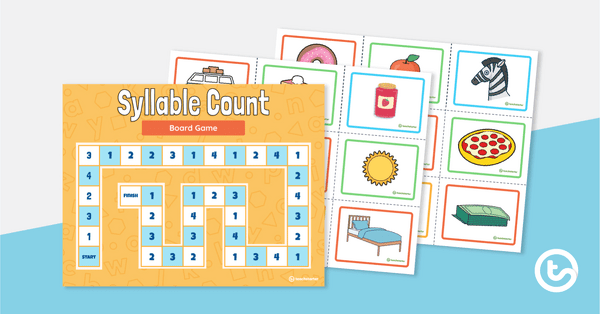
Syllable Count Board Game
Segment and count up to 4 syllables with this game board and set of 33 picture cards.
- Plus Plan
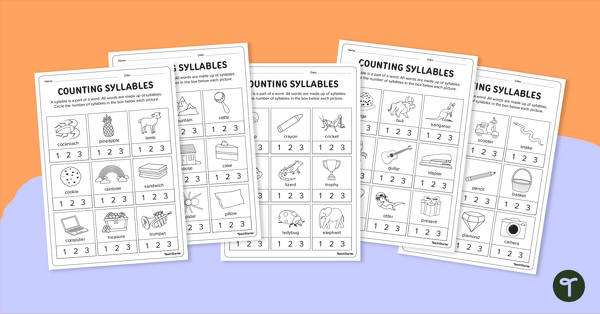
Count the Syllables - Worksheets
Count syllables in words with this set of 5 worksheets.
- Plus Plan
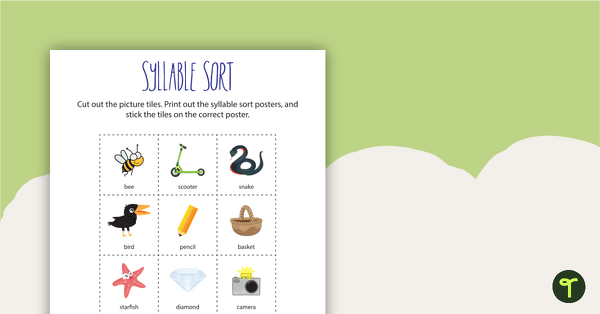
Syllable Sort
Use this Syllable Sort Game to assist your students in identifying syllables in different words.